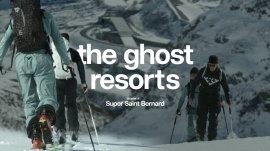Avalanche Near Mount Ruapehu, New Zealand, Underscores Dangers in Southern Hemisphere Backcountry
As the Northern Hemisphere basks in summer warmth, winter currently blankets the Southern Hemisphere, luring skiers and snowboarders to the slopes of Argentina, Chile, Australia, and New Zealand. Much like the Rocky Mountains of North America—where shifting snowpack and rugged terrain pose avalanche risks—the Southern Hemisphere’s mountain ranges harbor similar dangers. A recent avalanche incident in New Zealand’s Tongariro region serves as a stark reminder of the need for vigilance and preparation in these unpredictable alpine landscapes.
A serious avalanche was reported in New Zealand’s Tongariro region on Friday, 18 July. According to the New Zealand Avalanche Advisory (NZAA), a party of six was ski touring in the Mount Ruapehu backcountry near Glacier Knob when they triggered an avalanche while skinning. Four members of the group were partially buried. One was buried with only their face and arm free, while another was completely buried with only their hand protruding. An airway was cleared for the fully buried skier within two minutes, and all members were excavated within ten minutes. The group promptly submitted a public observation with the incident details. No injuries were reported.
Related: [PHOTOS] Avalanche Pass Trail in the Adirondacks, NY, Closed Due to Mud and Rockslides
Sharing this kind of information is crucial to improving safety, trip planning, and decision-making for the entire alpine community. “A huge thanks to the group for sharing a timely report. If anyone has more information about the incident, we’d love to chat and learn a bit more,” NZAA said in a social media post. The agency added that all public observations can be submitted anonymously if preferred.
Current Conditions
According to the NZAA, Tongariro is currently under an avalanche danger rating of 3 (considerable), valid until Tuesday, July 22, at 4:15 p.m. local time. Wind slabs remain a key concern, with continued snow transport observed. These slabs are still sensitive to triggering, particularly at higher elevations. While weather is expected to remain settled over the next 24 hours, showers are possible and southeast winds may make conditions unpleasant in exposed areas. Anyone venturing into the alpine backcountry is advised to adopt a conservative mindset.
Related: [PHOTOS] Ski Patrol Successfully Triggered a Size 2 Slab Avalanche at Ohau Snow Fields. New Zealand
A wind slab hazard persists on west and north aspects, with ongoing loading observed. These slabs remain sensitive, especially on steep, unsupported slopes. High-risk areas include sheltered terrain features—such as cirques that act as catchments—and slopes near ridgelines. These slabs have shown sensitivity to the weight of a single person.
A cornice hazard also exists above 1,700 meters (5,577 feet) on multiple aspects, due to shifting wind directions during the last storm cycle. These cornices may remain sensitive to light loads, and NZAA recommends maintaining a safe distance or avoiding them altogether.
Related: An Analysis of Avalanche Risk by Major Ski Country
The recent avalanche incident in New Zealand’s Tongariro region underscores the critical importance of vigilance and preparedness in the backcountry, even during seemingly stable conditions. With the current avalanche danger rated as considerable (Level 3), skiers and snowboarders must exercise caution, particularly in high-risk areas such as steep, unsupported slopes and ridgelines where wind slabs and cornices remain sensitive to triggering.
The post Avalanche Near Mount Ruapehu, New Zealand, Underscores Dangers in Southern Hemisphere Backcountry appeared first on SnowBrains.
Ссылка на источник: https://snowbrains.com/avalanche-near-mount-ruapehu-new-zealand-underscores-dangers-in-southern-hemisphere-backcountry/
- 2025-12-10 3 Skiers Caught and Partially Buried by Avalanche in Colorado Backcountry
- 2025-12-07 Teen Climber Killed in Slab Avalanche on Zugspitze, Germany’s Highest Peak
- 2025-12-06 Avalanche Warning Issued for Northern Colorado as Weekend Storm Approaches
- 2025-12-04 Backcountry Skier Caught in Avalanche Near Bridger Bowl, MT
- 2025-12-04 Backcountry Skier Caught in Avalanche Just North of Bridger Bowl, MT
- 2025-12-02 Skier Carried in Early-Season Avalanche in California’s Eastern Sierra, Walks Away Uninjured

